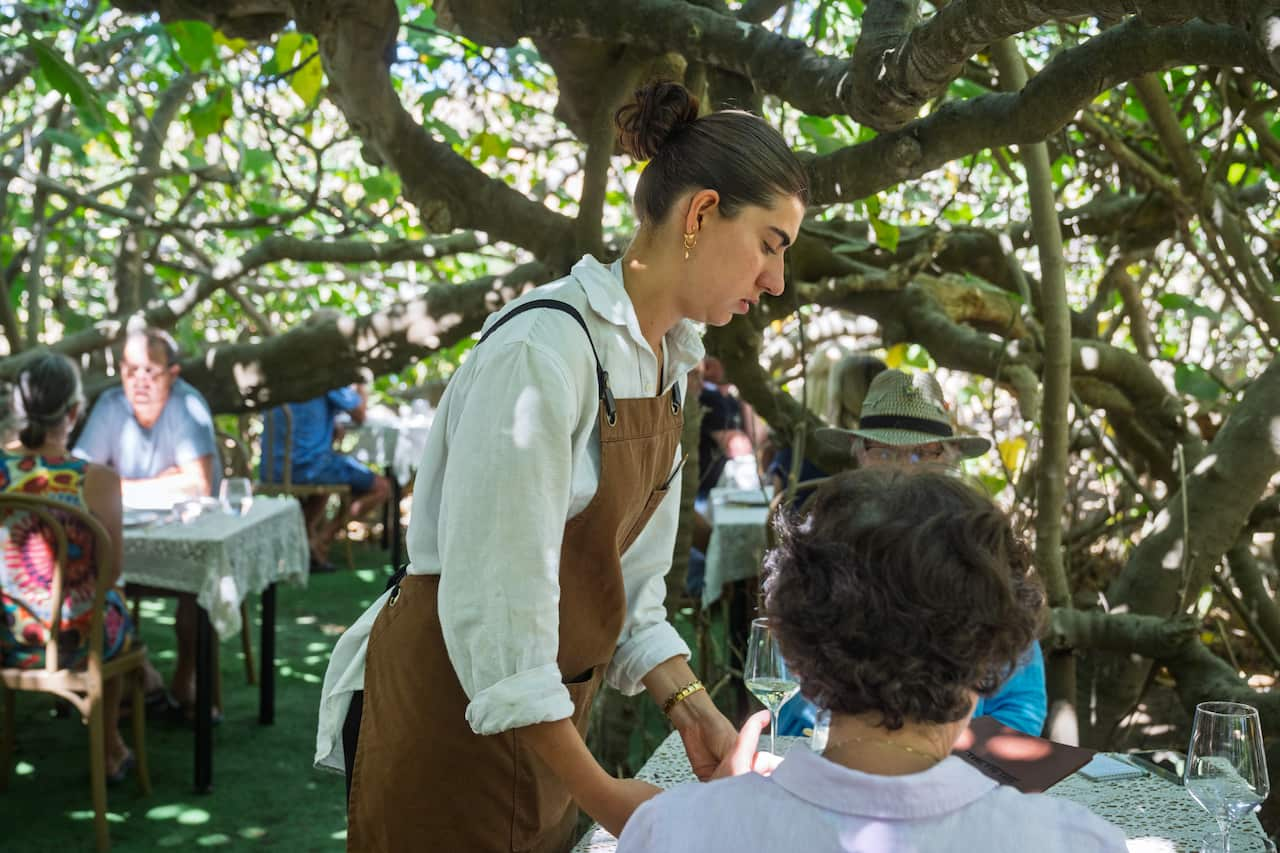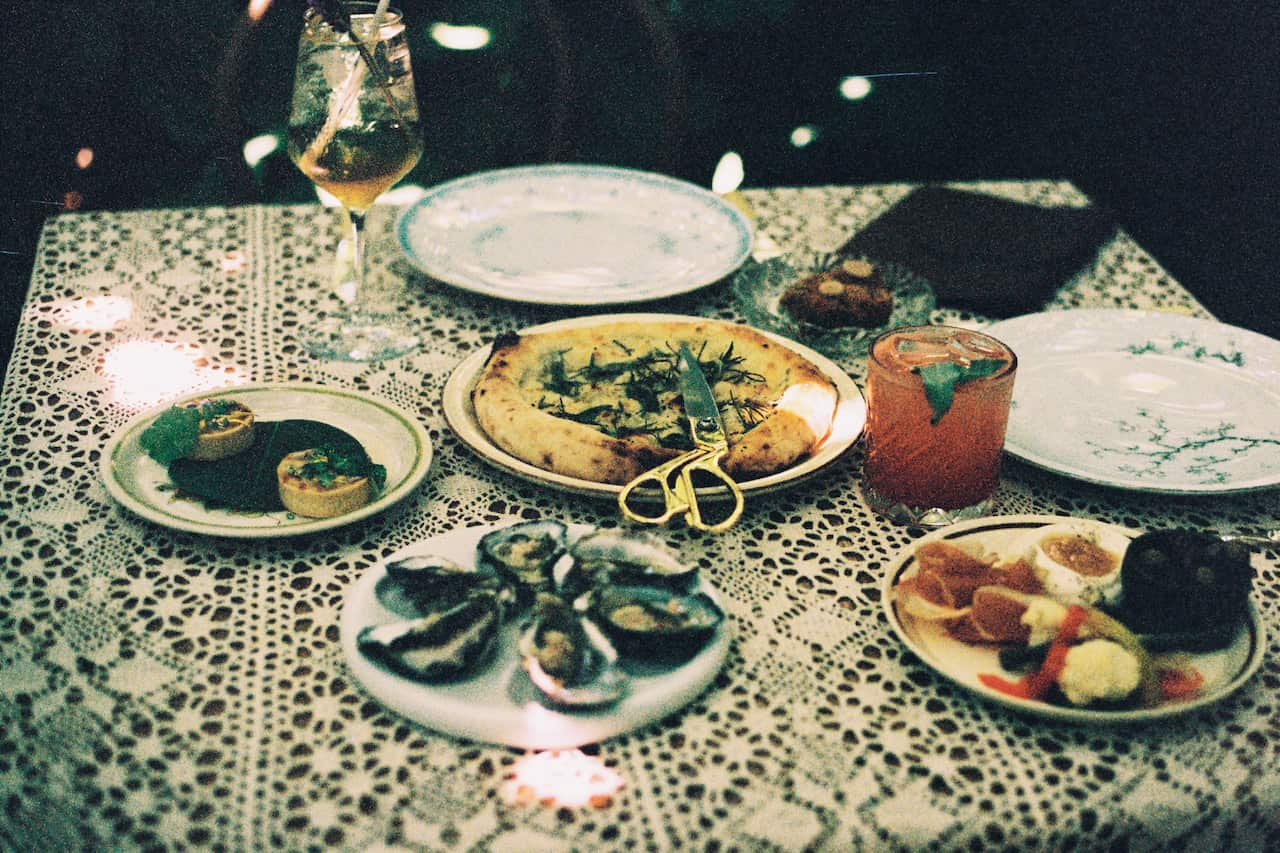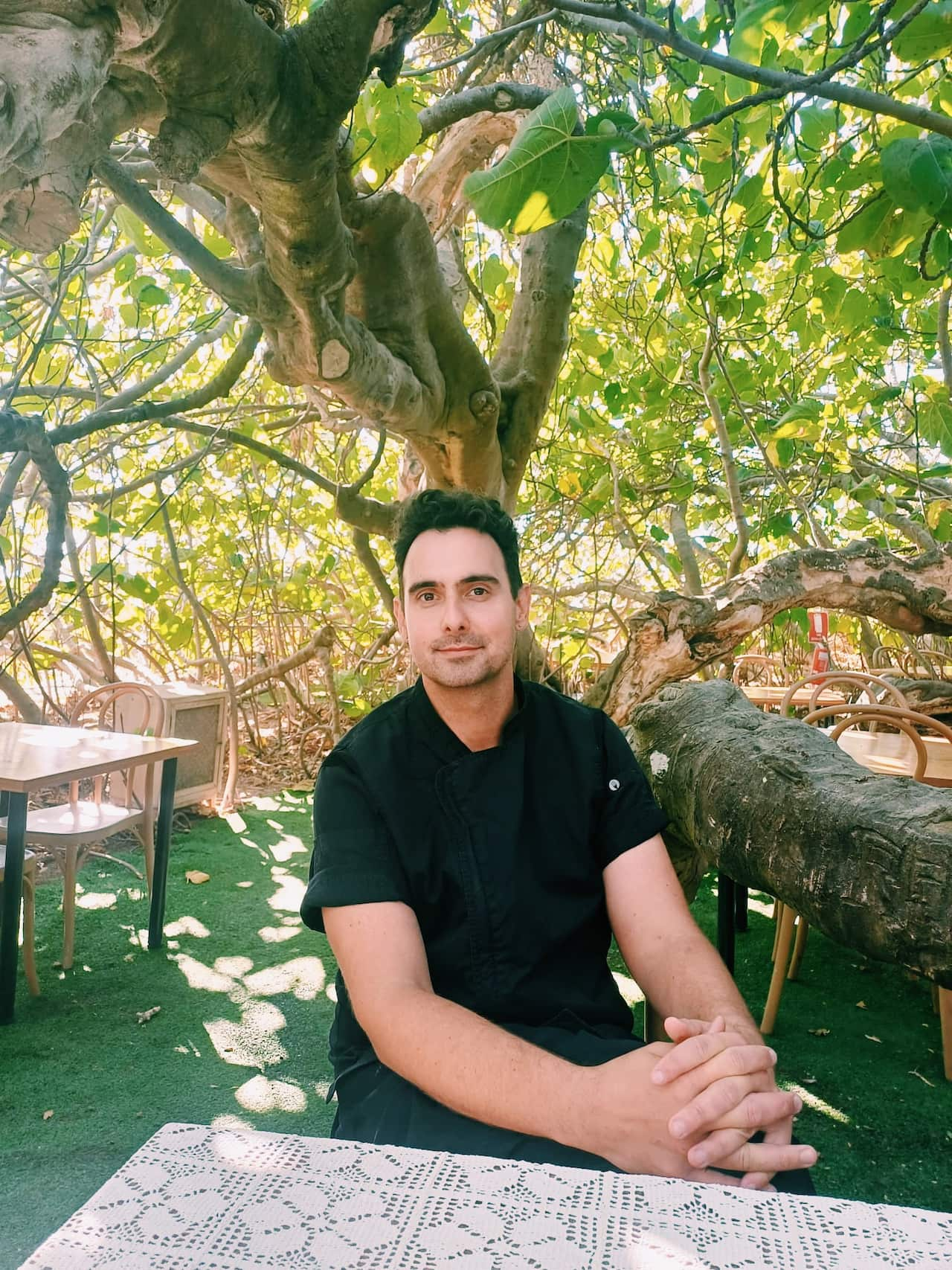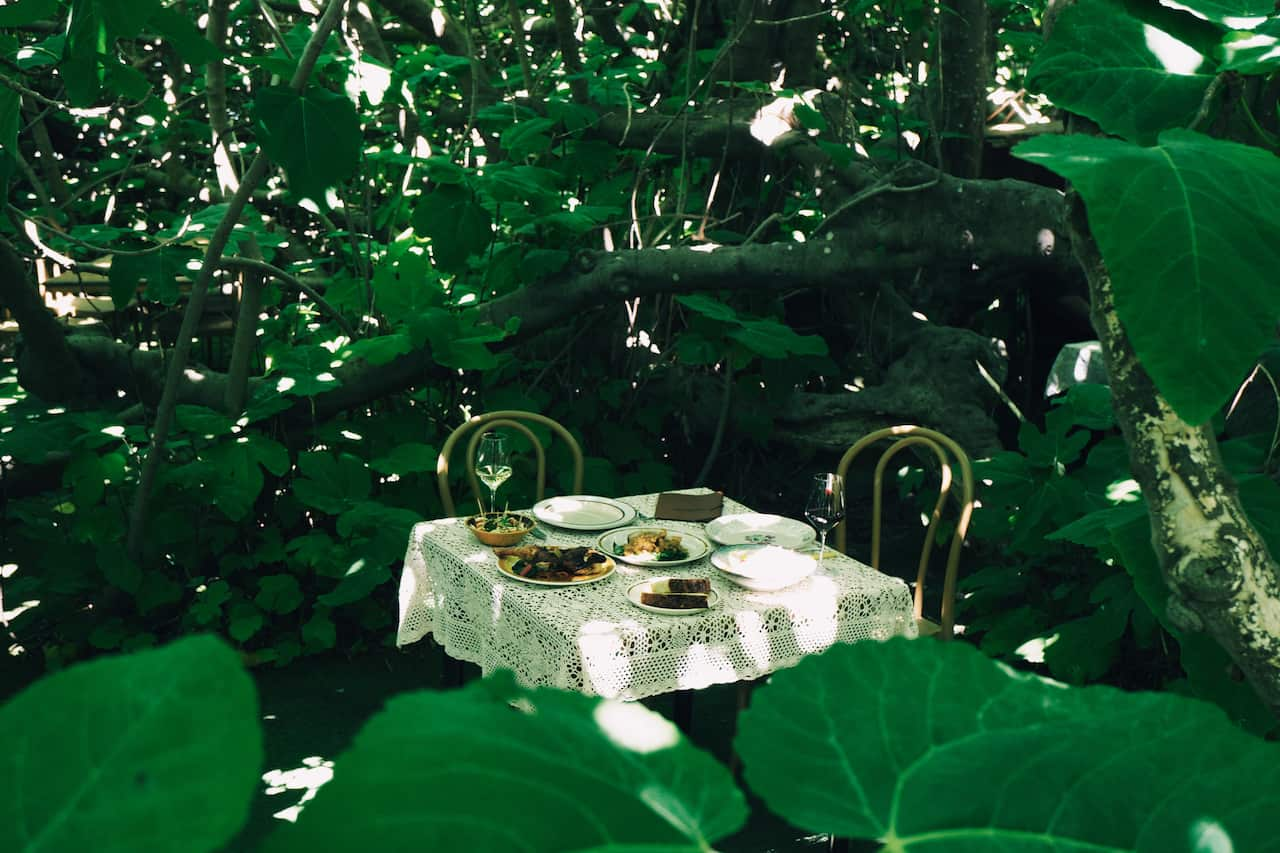For six months a year, a century-old fig tree on Kangaroo Island becomes a dining room. Not a backdrop, not a gimmick, an actual room of leaves and light where chef John Stamatakis (35) plates a languid, Mediterranean-leaning feast that tastes like the island itself: saltbush and sea mustard picked at dawn, just-hauled seafood, Ligurian honey and, fittingly, a dessert perfumed by fig leaves. It’s called The Fig Tree, and seats 45 comfortably (50 at a push). You don’t so much book a table as step into a season.
“People have been dining under fig trees since antiquity,” John shares. “Ours fully encloses you, the canopy goes all the way down. You step in and it’s cool, dappled, almost hushed. I’m always a little jealous of people seeing it for the first time, amazement is the general reaction.”
A living, breathing dining room
The tree dictates everything. Being deciduous, it doesn’t throw real shade until mid-October; by Easter, it’s busy fruiting, leaves thinning, and the room goes from verdant to “dark and a bit scary.” The season runs for roughly 22 weeks, while the canopy is dense enough for lunch to feel like a siesta. “It’s slightly nerve-wracking to be so linked to nature,” John admits. “If the tree isn’t happy, I don’t have a business. So while there’s foliage, we maximise it.” This year he’ll also open the property’s old shearing shed once a week for a fun, Italian-style La Baracca pop-up, insurance against wind, weather and the tree’s moods.

Diners enjoy a 3-hour Mediterranean feast.
John didn’t plan any of this. He first arrived when the previous owner needed help for a month; he stayed three. The next year it was six. The year after, he took over the leases and never looked back. Running a restaurant “in and alongside” a tree brings its own logistics: The Fig Tree sits 50–60km from Kingscote, so the five-person team lives together near Snelling Beach. Deliveries come weekly on the ferry; water arrives by truck; wine is collected from around the island. “It’s an interesting place to try and put a restaurant,” he laughs, “but when I’m not in the kitchen, I’m spearfishing, it’s paradise.”
What’s on the table
Lunch is a set sharing feast designed for lingering: antipasti, small plates, porchetta, fresh-from-the-oven pizzas and a finale that nods to heritage and place: a Fig Leaf Galaktoboureko. “It’s filo wrapped around semolina custard, usually soaked in honey syrup,” John shares. “We swap in fig syrup, maybe top with preserved baby green figs. We also make fig leaf gelato and the leaves bring this matcha-like bitterness that gives the dessert a little backbone.”

Slow dining.
Foraging is a daily ritual and a reminder of how close the kitchen sits to the sea. “We’re right across from Snelling Beach,” John says. “I can grab a bucket and shears, walk over and pick coastal saltbush and samphire, then be back on the pass in minutes.” Saltbush goes into breads and salads, fried or fresh for crunch and that unmistakable silvery-green “looks-like-the-coast” note. Samphire is pickled—salty, juicy, and surprisingly new to many diners. In the dunes he’s found a wild, spinach-like green, and last year he discovered sea mustard: “It’s got a real wasabi kick; we use it sparingly.” Summer brings cape gooseberries (“one berry, an orange’s worth of vitamin C”) and, of course, figs—so many figs he powders the leaves, preserves the fruit, talks about trying fig carpaccio and admits the local roos clean up whatever falls. “We’re lucky to have hundreds of kilos. Most places would have to use them sparingly.”
Slowness, generosity, and a little advice
The food reads Greek, Italian and Spanish, but the intent is singular: slow down, share, talk. John is second-generation Greek-Australian; those “big BBQ memories” hummed into focus during a first trip to Greece where eating and living blurred. “It’s a seductive way to eat,” he says. “That’s why I call it Mediterranean, it’s the generosity, the simple things done well.” He grins when asked about portions. “I always tell people to have a light breakfast or just a coffee. We feed you like family. Most guests leave with containers of leftovers, it’s difficult for me not to be generous.”

Chef & owner of The Fig Tree, John Stamatakis.
Kangaroo Island’s remoteness makes that generosity a daily act of faith. Producers are scattered; seasons are real. John rattles off the names of micro-farms and fishers he buys from, then shrugs at the challenges. “We’ll keep supporting them, it’s not always easy out here, but that’s the point of a place like this.”
One practical tip? Travel time. Visitors sometimes underestimate the distance back to the ferry and have to cut lunch short. “We warn people all the time,” John says. “And we tell them to pack bathers. After three hours under the canopy, there’s a beach nap with your name on it.”
Are we really dining in a tree?
David Hay, owner of Thorn Park on the island in Penneshaw and one of The Fig Tree’s longest-standing patrons, has been visiting since the 1980s. “It’s quite magical,” he says. “You walk in and don’t really know what will happen, then suddenly you’re inside the most acoustically designed dining room. There can be 50 people and all you hear is a gentle hum. The dappled light, the intimacy, you sort of forget about everything. People keep asking, are we really dining in a tree? And then you just have this wonderful, intimate meal of beautiful, locally-sourced food.”

In the green room. Credit:
John never tires of that first gasp. “It never gets old,” he shares. “We want to cement the Fig Tree as an unmissable South Australian experience, certainly on KI. When the weather’s on, it’s magic. The flies disappear, the light streams through, and for three hours you’re somewhere else.”
Somewhere under a canopy that breathes, where the seasons are plated and the dessert tastes faintly of leaves. Somewhere you might call one of Australia’s most unique dining experiences and you wouldn’t be wrong.
Link to recipes:
Share
SBS Food is a 24/7 foodie channel for all Australians, with a focus on simple, authentic and everyday food inspiration from cultures everywhere. NSW stream only. Read more about SBS Food
Have a story or comment? Contact Us

